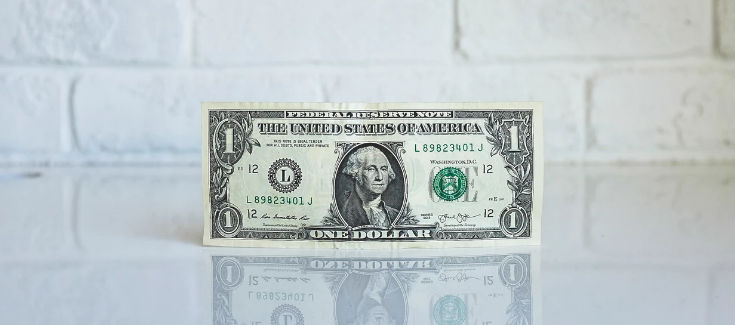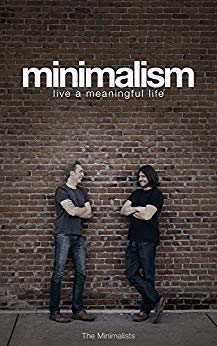

This article is an excerpt from the Shortform summary of "Minimalism" by Joshua Fields Millburn and Ryan Nicodemus. Shortform has the world's best summaries of books you should be reading.
Like this article? Sign up for a free trial here .
Want to simplify your finances? Do you want to save money while living the life you always wanted?
Try a Minimalist Budget. You’ll cut down on everything you don’t need, while saving room for what you do.
Minimalist Finance Introduction
Money has a powerful hold on many people. Money is often the reason people keep doing something they hate (Gotta pay the bills!). But while you need to make a living, you can do it while pursuing your passion.
Money problems inject anxiety into our daily lives, and keep us in discontent. We never seem to have enough money; we live from paycheck to paycheck, and can’t get ahead.
The best way to remove the anchor of money is to give it less importance in your life. The authors did this by developing a five-step plan to regain control of their finances.
Taking control of your financial life involves more than increasing your income. It requires:
- Making good decisions with the resources you have.
- Changing your financial habits.
- Living deliberately.
This isn’t easy, especially in our instant gratification culture, but it can be done with five steps.
Minimalist Budget Step 1: Budget
Most of us don’t know where our money is going, though we may think we know. This is especially true in a marriage, where it can be hard to keep track of what the other person is spending.
The first step toward minimalist financial freedom is establishing a written monthly budget, following a few guidelines:
- Create categories: Identify what’s truly necessary by identifying all your monthly expenses based on the past six months. This is a key of minimalist finance.
- Divide them into three categories: Need, want, like.
- Write down every expense: food, housing, cars, insurance, gas, utilities, pets, clothes, phones, internet, entertainment. Check the list with your significant other or friend.
- Then use the need, want, like categories to prioritize and cut where you can. The stricter you are the sooner you’ll be free.
- Set boundaries: Assign every dollar at the beginning of the month. You won’t worry about what you can and can’t buy because money that wasn’t assigned to something at the beginning of the month can’t be spent. This is required to keep to your minimalist budget.
- Work as a team: Everyone in the household including children must have a say in the written budget, so you get everyone’s buy-in. You can take from one category to fund another if everyone agrees. With everyone on board, it’s much easier to control your finances.
- Adjust as needed: You’ll have some slip-ups along the way; it’s part of the process. At first, check the minimalist budget daily, then weekly, and adjust as necessary until everyone is comfortable with the allocations. The first month will be the hardest, but soon you’ll be surprised at how much money you used to waste.
- Create an emergency fund: Create a savings account for emergencies ($500 to $1,000 to start with). Don’t use it unless there is a true emergency (car repairs, medical bills, job loss, etc.) This fund will allow you to stay within minimalist budget when something unexpected happens. It should eventually cover several months of income.
Minimalist Budget Step 2: Pay Yourself (Invest)
To make investing seem less complicated, think of it as paying your future self.
It’s easy with today’s online tools. Joshua uses a simple online investment tool (Betterment.com) as his personal savings, planning, and investing software. Using the tool, he puts money into four buckets: emergency fund, retirement fund (traditional IRA), house-buying fund, and wealth-building fund (additional retirement funds beyond the maximum IRA contribution).
Now is the best time to start planning for your future. Even if you don’t have money to invest, create a plan to begin investing in your future self. The best way is to automate the investments, whether you invest 1% of your income or just $20 a month to start.
Minimalist Budget Step 3: Debt-Free
Contrary to what you might hear, there’s no such thing as “good debt.” Some debt is worse than other debt, but it’s never “good.”
You won’t feel free until you’re debt-free. Besides, it feels great to have no car payments, credit card or student loan payments.
Throughout their twenties Joshua and Ryan ran up debt of more than six figures each. It felt debilitating. Dave Ramsey’s book, Total Money Makeover, provided steps they used to create a detailed financial plan, cut up their credit cards and pay their debts.
(Shortform note: Dave Ramsey’s seven “Total Money Makeover” steps are: Create a beginner emergency fund, pay off debts, save three to six months of expenses in a fully funded emergency fund, invest 15% of your income for retirement, save for your children’s college, pay off your home, build wealth and give.)
Minimalist Budget Step 4: Minimize
Minimalism is a key component for achieving financial freedom. By clearing clutter from their lives, Joshua and Ryan were able to focus on eliminating debt, changing habits, and making better decisions with fewer resources.
By simplifying — identifying which possessions weren’t adding value to their lives — they were able to sell unneeded items and put the money toward debt.
Minimalism finance doesn’t mean deprivation, but sometimes it’s helpful to temporarily deprive yourself of short-term satisfactions while trying to move in a better direction.
For example, Joshua sold his oversized house and moved into a small apartment. Ryan sold his fancy new car and bought an older vehicle without a monthly payment. They dropped cable, satellite radio, and other luxuries. They also picked up side jobs to pay off their debt faster. And they sold many items including electronics, furniture, and clothes for extra cash.
Now, everything they own serves a purpose or brings joy, and they don’t miss the old stuff.
Minimalist Budget Step 5: Contribute
Helping people who are less fortunate than you are can help you appreciate what you have and gain perspective.
Get started by doing an internet search for volunteer opportunities in your area.
If you contribute even in a small way to someone’s life, you’ll realize your financial problems are small compared to the problems many others struggle with. You’ll feel empowered to take action to eliminate your own relatively minor problems.
Achieving Financial Freedom
The five steps to financial freedom work for anyone, regardless of your family situation or how much/how little you make.
In a short time — two or three years — you can transform your life. It takes a plan, determination (turning your shoulds into musts) and continued progress in the new direction.
Financial freedom doesn’t come from income level, but from decisions we make with the resources we have.
———End of Preview———

Like what you just read? Read the rest of the world's best summary of "Minimalism" at Shortform . Learn the book's critical concepts in 20 minutes or less .
Here's what you'll find in our full Minimalism summary :
- What Minimalism is, in complete detail
- How to simplify your life and get rid of things you don't need
- What's holding you back from your ideal career passion
- How to take care of your body and health, the simple way






